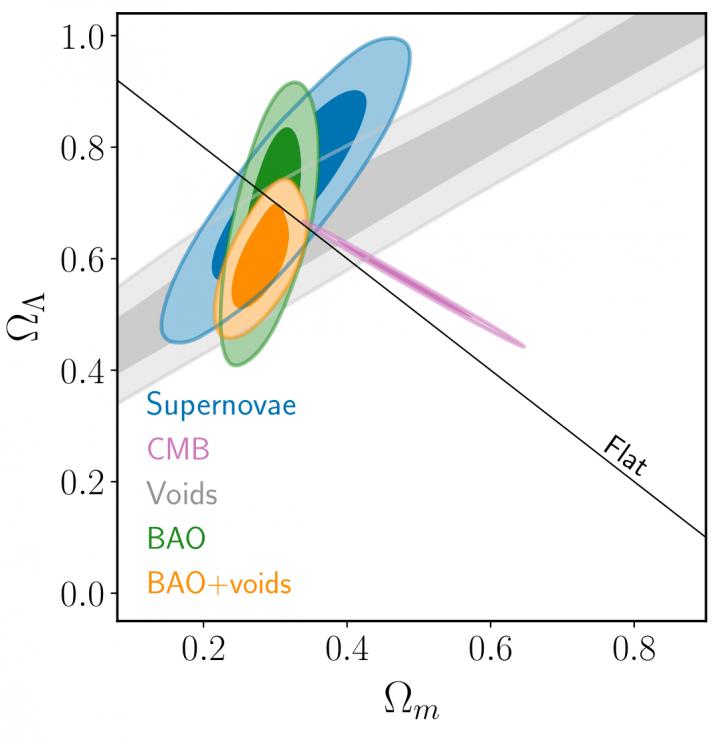
Credit: Image credit: Jeremy Tinker and the SDSS-III collaboration
A new paper has shown how large structures in the distribution of galaxies in the Universe provide the most precise tests of dark energy and cosmic expansion yet.
The study uses a new method based on a combination of cosmic voids – large expanding bubbles of space containing very few galaxies – and the faint imprint of sound waves in the very early Universe, known as baryon acoustic oscillations (BAO), that can be seen in the distribution of galaxies. This provides a precise ruler to measure the direct effects of dark energy driving the accelerated expansion of the Universe.
This new method gives much more precise results than the technique based on the observation of exploding massive stars, or supernovae, which has long been the standard method for measuring the direct effects of dark energy.
The research was led by the University of Portsmouth, and is published in Physical Review Letters.
The study makes use of data from over a million galaxies and quasars gathered over more than a decade of operations by the Sloan Digital Sky Survey.
The results confirm the model of a cosmological constant dark energy and spatially flat Universe to unprecedented accuracy, and strongly disfavour recent suggestions of positive spatial curvature inferred from measurements of the cosmic microwave background (CMB) by the Planck satellite.
Lead author Dr Seshadri Nadathur, research fellow at the University’s Institute of Cosmology and Gravitation (ICG), said: “This result shows the power of galaxy surveys to pin down the amount of dark energy and how it evolved over the last billion years. We’re making really precise measurements now and the data is going to get even better with new surveys coming online very soon.”
Dr Florian Beutler, a senior research fellow at the ICG, who was also involved in the work, said that the study also reported a new precise measurement of the Hubble constant, the value of which has recently been the subject of intense debate among astronomers.
He said: “We see tentative evidence that data from relatively nearby voids and BAO favour the high Hubble rate seen from other low-redshift methods, but including data from more distant quasar absorption lines brings it in better agreement with the value inferred from Planck CMB data.”
###
CAPTION (image Nadathur 1): A section of the three-dimensional map of galaxies Sloan Digital Sky Survey used in this analysis. The rectangle on the far left shows a patch of the sky containing nearly 120,000 galaxies (a small fraction of the total survey). The centre and right images show the 3D map created from these data: brighter regions correspond to the regions of the Universe with more galaxies, and darker regions to voids. Image credit: Jeremy Tinker and the SDSS-III collaboration
CAPTION (image Nadathur 2): The values of the energy density of matter (Ω_m) and dark energy (Ω_Λ) in the Universe measured from different cosmological data. Image credit: Seshadri Nadathur.
Media Contact
Kate Daniell
[email protected]
Related Journal Article
http://dx.




